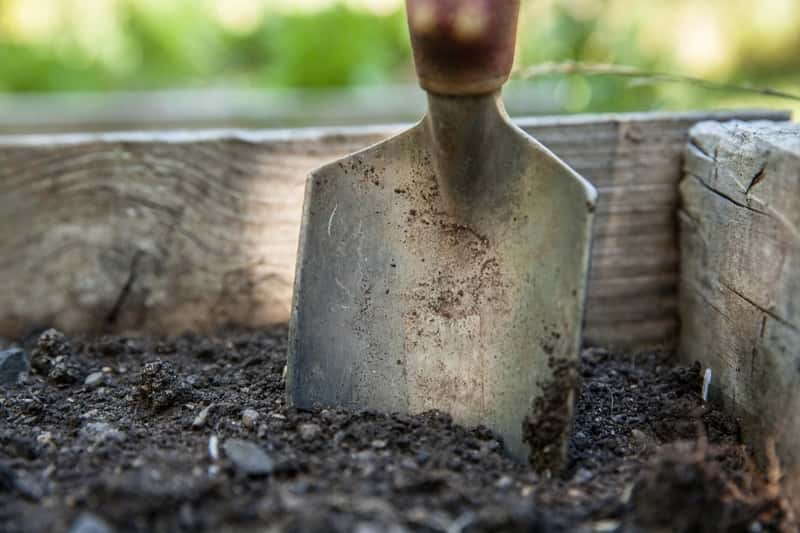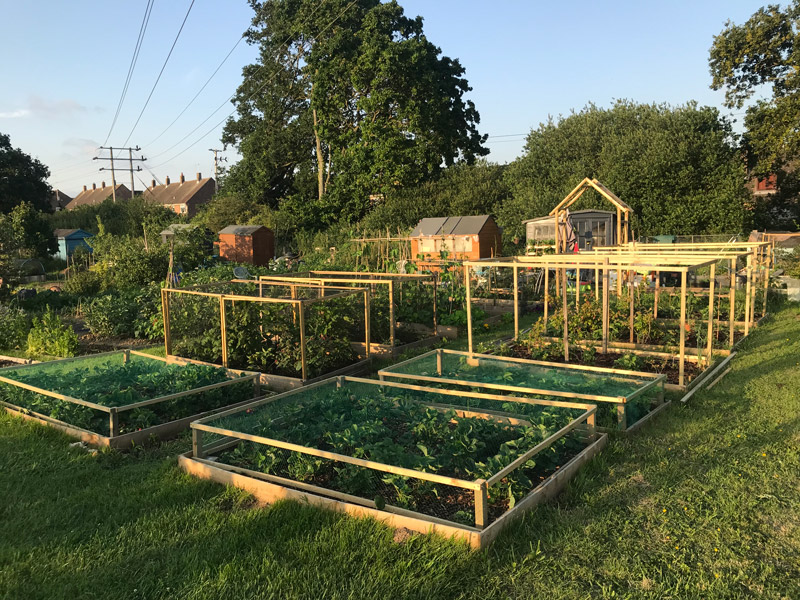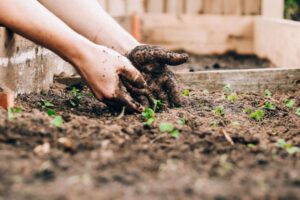
Raised beds can be a great way to organise your planting and add structure to your garden. They can also make for an accessible way to garden which doesn’t avoid as much bending and lifting!
Our experts share some advice about creating and filling a raised bed including how to plan the space and manage any planting.

1) Find A Space with good Light
The first thing to consider when creating a raised bed is making sure that the plants – whether vegetable or bedding – have enough light. To grow fruit and vegetables in your raised garden beds, finding a space with plenty of light is essential. Building a raised bed and getting the position of it right will save you money and time later on. So take some time to consider your space, and choose a place which offers you the right balance of sun and shade.
2) What fits?
Mark out where to put the raised bed. The best dimension to consider is where the bed isn’t bigger than 120cm wide and long – this ensures you’ll be able to access the plants in the middle once they are grown. When it comes to depth aim for greater than 15cm; you’ll need at least double that for root crops. If drainage could be an issue, testing how your beds hold water is critical to your gardening success, so ensure you have some drainage options.
3) Choose your materials
The next step is thinking about the materials you want to use to build the bed. Railway sleepers are sturdy and long-lasting but make sure that the wood is treated against weather and moisture so they don’t rot and crumble over time!
If you want to be more environmentally friendly and use an untreated option, Cedar or Larch are perfect. Larch is abundant in the UK and mainly used for pallets. This means it’s naturally durable and planks that are at least 5cm thick should last you at least a decade, even untreated. You can also use recycled plastic if it fits with your garden design.

4) Build it!
To build the bed, be sure to overlap the planks and use long decking screws. If you have measured out the bed on grass, it might be a good idea to build it on a layer of plastic sheeting or damp-proof course or membrane to stop weeds popping up through the growing year.
5) Fill The Bed
When you’re ready to fill the bed, use a good mix of compost and soil. We recommend our 100% peat-free Beds and Borders Compost mixed in with our Topsoil Supreme. This provides your bed with wonderfully rich nutrients as well as a consistency that gives good drainage.
Try a ratio of two parts Topsoil Supreme to one part 10mm Beds and Borders or Vegetable Compost, as you can always top it up with more compost throughout the year. Our Compost Mulch, or even a little Cow Compost would also work well, and add in extra nutrients.
6) What to Plant Together
Most plants can be grown in a raised bed, but it’s important to check which plants grow well together when you’re starting your gardening adventure. Consider companion planting to stop pests and insects eating your crops!
7 Labour of love
Finally, enjoy your raised bed. You’ve put a lot of work into creating and filling your raised bed, so now enjoy spending time in your garden and watching and nurturing your plants as they grow.
For more information about raised beds or our topsoils or compost, get in touch today!



